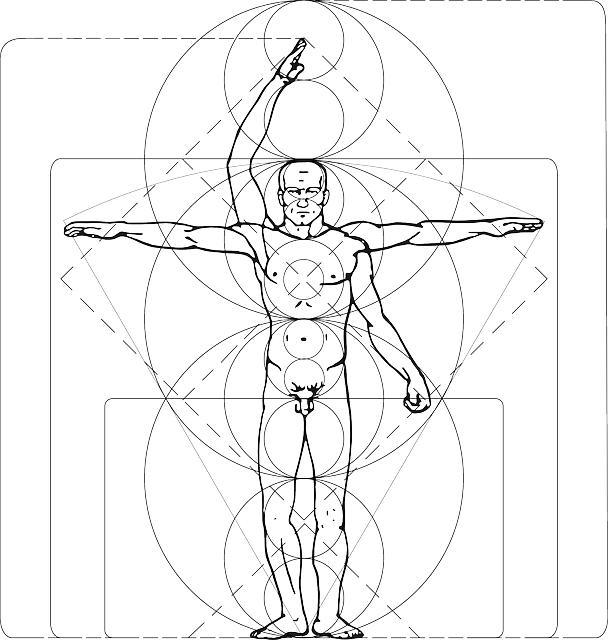Welcome to the realm of audio export in DaVinci Resolve 18, where the intricate dance of sound waves meets the magic of digital technology. In this article, we embark on a journey to unravel the enigmatic world of audio exporting, peeling back the layers of complexity to reveal the hidden wonders within. Like a skilled alchemist transforming raw elements into pure gold, we will explore the tools, techniques, and secrets that empower creators to craft audio masterpieces with precision and finesse. Get ready to dive deep into the heart of audio export in DaVinci Resolve 18, where every sound tells a story waiting to be heard and every export is a doorway to endless possibilities.
Unveiling the Origin of Audio Issues in DaVinci Resolve 18
In the realm of audio export within DaVinci Resolve 18, the mystery behind unexpected audio issues has been unraveled. It turns out that the key to resolving these perplexing problems lies in understanding the nuances of audio codec settings. The insightful revelation shared in the video transcript sheds light on a common predicament faced by content creators when transitioning their projects from DaVinci Resolve to platforms like YouTube and Instagram. As highlighted in the transcript, the shift from AAC to linear PCM in the audio codec settings can lead to a vanishing act of audio specifically in Instagram Reels, causing a wave of confusion among users. By opting for the YouTube preset during export rather than custom settings, the audio magic is preserved, ensuring a seamless playback experience across different platforms.
Delving deeper into the technical intricacies of the export process, the transition from AAC to linear PCM codec within DaVinci Resolve’s export window emerges as the culprit behind the audio disappearance phenomenon on Instagram Reels. The enigma surrounding this unforeseen codec switch continues to baffle users, prompting a call for insights from the community to shed light on this peculiar occurrence. By decoding this puzzle and ensuring the codec is set to AAC before exporting, content creators can rest assured that their audio will harmoniously accompany their visual creations on various online platforms. This newfound understanding not only resolves the audio conundrum but also paves the way for a smoother content creation journey in DaVinci Resolve 18.
Decoding the Role of Audio Codecs in DaVinci Resolve 18 Exports
In the realm of audio exports within DaVinci Resolve 18, there exists a mysterious dance of codecs that can either be a filmmaker’s best friend or worst enemy. As highlighted in the insightful video transcript, the speaker shares a personal anecdote regarding an audio conundrum that plagued their creations until a solution was stumbled upon. The revelation that exporting content utilizing the YouTube preset instead of custom settings made all the difference in maintaining audio integrity across various platforms like Instagram and YouTube is a golden nugget of wisdom for all content creators. Through this simple tweak in the export settings, the issue of disappearing audio on Instagram Reels was effectively resolved, shedding light on the significant impact of audio codecs on the final output.
Delving deeper into the technical nuances, the culprit behind the audio disappearance mystery was none other than the infamous codec switch from AAC to linear PCM. This unexpected alteration in the export window proved to be the root cause of discord, with Instagram Reels struggling to handle the linear PCM codec while YouTube sailed smoothly. The speaker’s plea for insights into why this codec transformation occurs sporadically serves as a call to arms for the tech-savvy individuals in the community to unravel this enigma. Hence, for those grappling with audio woes during exports, ensuring the codec is firmly set to AAC before the final export can save one from the turmoil of silent uploads and uphold the sanctity of sound across diverse digital platforms.
Optimizing Your Audio Settings for Seamless Instagram Reel Uploads
Optimizing audio settings for a seamless Instagram Reel upload is crucial to maintaining the quality of your content. When dealing with audio export in DaVinci Resolve 18, there are key considerations to ensure your uploads are flawless. One effective solution mentioned in the video transcript is to export your Shorts using the YouTube preset within the DaVinci Resolve export window. By utilizing this preset, you can avoid potential audio issues that may arise when uploading to platforms like Instagram. The specific adjustment from AAC to linear PCM codec can make a significant difference in how your audio is recognized by different platforms.
In the context of audio optimization, understanding these technical details can make a world of difference in your content creation workflow. By being aware of how codec settings impact audio compatibility across various platforms, you can circumvent issues like disappearing audio in Instagram Reels. So, the next time you’re facing audio challenges during export, remember to double-check and ensure that the codec is set to AAC to maintain audio integrity throughout the upload process. This simple adjustment can save you time and frustration, ensuring that your Instagram Reels are delivered with the audio clarity they deserve.
| Platform | Optimal Codec |
|---|---|
| YouTube | AAC |
| Instagram Reels | AAC |

Q&A
Q: Why did the content creator feel compelled to make another video in the last week of 2023?
A: The content creator couldn’t resist the urge to create a video when an idea popped into their head, likening it to the necessity of going to the toilet. Just like how you can’t hold it in, creative ideas need an outlet.
Q: What audio issue was the content creator facing with DaVinci Resolve and how did they resolve it?
A: The content creator was struggling with audio disappearing when uploading shorts to Instagram as Reels, even though it was fine on YouTube. They discovered that changing the audio codec from AAC to linear PCM was the culprit. By exporting with the YouTube preset, the issue was resolved as Instagram Reels couldn’t handle the linear PCM codec.
Q: Why was it essential to ensure the audio codec was set to AAC before exporting?
A: It was crucial to set the audio codec to AAC before exporting because Instagram Reels couldn’t handle the linear PCM codec. By making this adjustment in the export settings, the audio was preserved and there were no more issues with disappearing audio on Instagram uploads.
Q: What was the content creator’s key takeaway from this experience with audio exports in DaVinci Resolve?
A: The content creator emphasized the importance of checking and setting the audio codec to AAC before exporting to avoid audio issues on platforms like Instagram. Despite the mystery of why the codec sometimes switches from AAC to linear PCM, the solution was simple yet effective in ensuring the audio remained intact during uploads.
Concluding Remarks
As we come to the end of this exploration into the enigmatic realm of audio exports in DaVinci Resolve 18, it’s intriguing to unravel how a simple switch in codec settings can make all the difference. Much like the creative process itself, the spontaneity of ideas and their swift materialization mirror a natural flow - as beautifully expressed by the analogy of needing to relieve oneself when the urge strikes. Just as one wouldn’t hold back nature’s call, fixing audio issues promptly is essential to avoid the digital equivalent of discomfort.
The journey shared in the video transcript encapsulates the frustration of encountering unexpected hurdles, only to discover a simple yet effective solution that alleviates the problem. It serves as a reminder that sometimes, the answers we seek are hidden in plain sight, waiting to be uncovered through a combination of experimentation and insight. By adjusting the audio codec settings to AAC, a smooth export experience was achieved, highlighting the intricate dance between technology and user understanding.
As we bid farewell to 2023 and eagerly anticipate the promises of 2024, let this narrative of audio revelation inspire us to embrace challenges with curiosity and persistence. Just as a filmmaker crafts each frame with precision, so too can we fine-tune our digital creations with a keen eye for detail. May this newfound knowledge serve as a beacon of clarity in future projects, enabling seamless transitions from creation to distribution. Here’s to a harmonious blend of creativity and technology in the year ahead. Until next time, stay inspired, stay curious, and let your audio stories resonate with clarity. Cheers to a New Year filled with endless possibilities!
